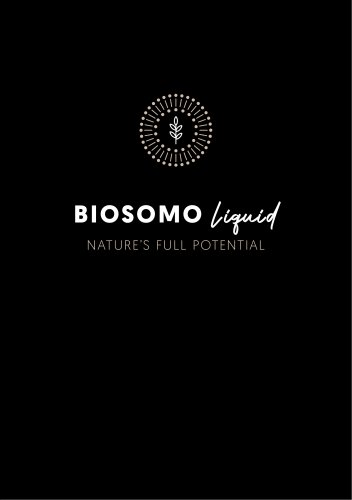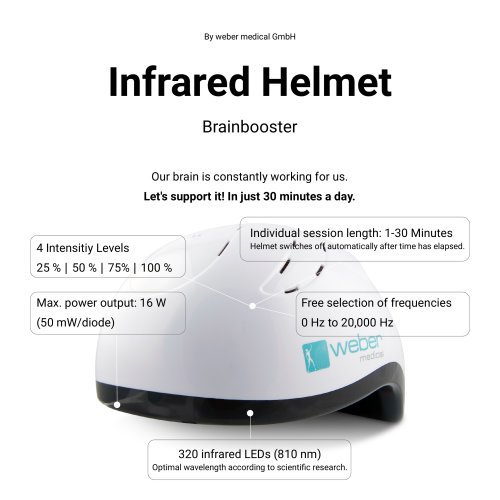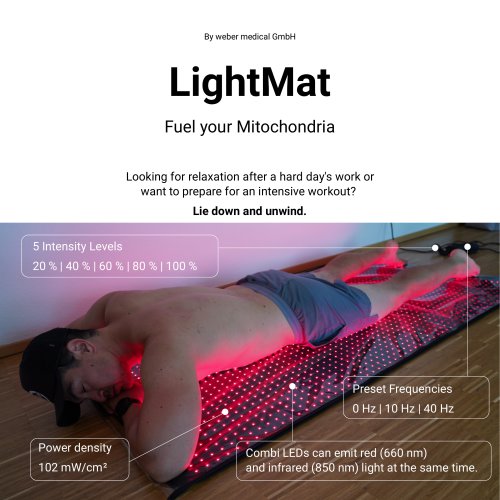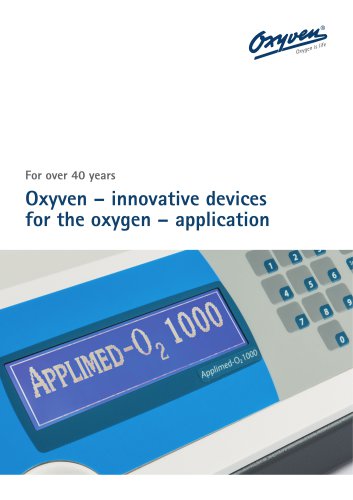 Website:
Weber Medical
Website:
Weber Medical
Catalog excerpts
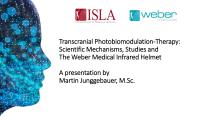
Transcranial Photobiomodulation-Therapy: Scientific Mechanisms, Studies and The Weber Medical Infrared Helmet A presentation by Martin Junggebauer, M.Sc.
Open the catalog to page 1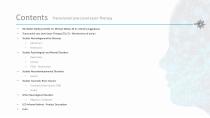
Transcranial Low-Level-Laser-Therapy Bio Weber Medical GmbH, Dr. Michael Weber, M.Sc. Martin Junggebauer Transcranial Low-Level Laser Therapy (TLLLT) – Mechanisms of action Studies Neurodegenerative Diseases • • Alzheimer’s Parkinson’s Studies Psychological and Mental Disorders • PTSD - Testimonials Studies Neurodevelopmental Disorders Studies Traumatic Brain Injuries Traumatic Brain Injuries (TBI) Stroke Other Neurological Disorders Migraine / headache
Open the catalog to page 2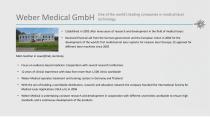
Weber Medical GmbH One of the world’s leading companies in medical laser technology • Established in 2003 after many years of research and development in the field of medical lasers • Received financial aid from the German government and the European Union in 2004 for the development of the world’s first multichannel laser systems for invasive laser therapy: CE approval for different laser machines since 2005 Main location in Lauenförde, Germany • Focus on evidence-based medicine: Cooperation with several research institutions • 12 years of clinical experience with data from more than 1,500...
Open the catalog to page 3
Scientific Partnerships International Research Networks
Open the catalog to page 4
Michael Weber, MD Pioneer of Modern Laser Therapy • Dr. Michael Weber is a medical practitioner in Germany since more than 30 years • Holds MD diploma and is certified bio chemist • Leads three medical centers for general and internal medicine, pain management and cancer treatment • Works in research with many national and international institutions and universities • President of the International Society for Medical Laser Applications • Editor in chief of the International Journal for Medical Laser Applications and coeditor of several other medical journals • Developed the patented...
Open the catalog to page 5
Martin Junggebauer, M.Sc. • 2013: Graduation as M.Sc. International Development Economics & Global Health • Since 2013: Collaboration with WeberMedical: Business Development and Research • Since 2013: Co-founder and co-president of ISLA Research Group - a non-profit scientific organization that conducts in-vivo-research in the area of antimicrobial photodynamic therapy. • 2015: Co-author of the book “Low-Level-Laser-Therapy: Foundations and Clinical Applications”. • Since 2019: Founder and CEO of J-MedTech-Consulting: Consulting agency for clinic set ups, distribution of other technologies...
Open the catalog to page 6
Transcranial Low-Level Laser Therapy Transcranial Low-Level Laser Therapy (TLLLT) is the direct irradiation of the human brain with highly focused infrared lasers. Unlike other wavelengths, infrared light has the ability to penetrate bones and to bring light energy to the targeted brain areas. Light energy is absorbed by different types of cells to trigger a broad range of intra-cellular effects. Why infrared light? LED therapy is non-invasive, painless and non- The optimum wavelength for max. skull penetration is between 805 nm and 830 nm (infrared). thermal. Studies show that the light...
Open the catalog to page 8
How PBM affects cellular activity in the brain Stimulation of the mitochondrial respiratory chain (cytochrome c oxidase) Release of NO by photodissociation vasodilatory effects Brief increase in reactive oxygen species Improves lymphatic flow = Increased cerebral blood flow Activation of beneficial cellular pathways Stimulates cytoprotective, anti-oxidant, anti- inflammatory, and antiapoptotic effects in cells Improved oxygen availability and oxygen consumption Activation of signaling pathways and transcription factors that cause long-lasting changes in protein expressio
Open the catalog to page 9
The important role of molecular photoreceptors Molecular and intracellular mechanisms of transcranial low-level laser (light) or photobiomodulation Michael R. Hamblin, Shining light on the head: Photobiomodulation for brain disorders, BBA Clinical (2016) Cytochrome c oxidase and heat-gated ion channels are two of the most important molecular photoreceptors or chromophores inside neuronal cells. They absorb photons that penetrate into the brain. The signaling pathways and activation of transcription factors lead to the eventual effects of PBM in the brain. AP1 = activator protein 1 ATP =...
Open the catalog to page 10
How PBM benefits brain disorders Tissue specific processes that occur after PBM and benefit a range of brain disorders Michael R. Hamblin, Shining light on the head: Photobiomodulation for brain disorders, BBA Clinical (2016) Summary: The most important effects - Increase of ATP production = improved brain metabolism - Improved cerebral blood flow and lymphatic flow - Improved cerebral oxygenation - Reduction of neuroinflammation - Improved neuronal signaling - Increased neurogenesis and synaptogenesis - Anti-apoptotic proteins - Anti-oxidant effects
Open the catalog to page 11
Neurodegenerative Diseases
Open the catalog to page 12
Impaired brain energetics is involved in the cause and progression of NDAs
Open the catalog to page 13
Neurodegenerative Diseases: Alzheimer´s / Dementia
Open the catalog to page 14
Pre-Clinical and Clinical Studies: Dementia / Alzheimer´s
Open the catalog to page 15
TLLLT for Alzheimer’s Disease General Study Results Daniel M.Johnstone, CécileMoro, JonathanStone1, Alim-LouisBenabid, J.Mitrofanis:
Open the catalog to page 16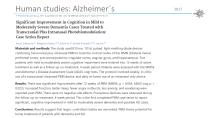
Human studies: Alzheimer´s
Open the catalog to page 17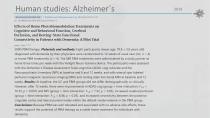
Human studies: Alzheimer´s
Open the catalog to page 18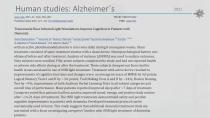
Human studies: Alzheimer´s
Open the catalog to page 19
Neurodegenerative Diseases: Parkinson´s Disease
Open the catalog to page 20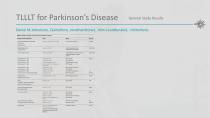
TLLLT for Parkinson’s Disease General Study Results Daniel M.Johnstone, CécileMoro, JonathanStone1, Alim-LouisBenabid, J.Mitrofanis:
Open the catalog to page 21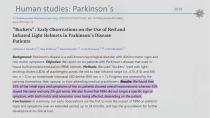
Human studies: Parkinson´s
Open the catalog to page 22
Human studies: Parkinson´s
Open the catalog to page 23
Animal models: PBM Mechanisms in PD The Model Use of compounds that damage the mitochondria. Although the animal models of PD do not completely mimic the human disease, they have been useful for studying the pathophysiology of PD, and for testing the effectiveness of novel treatments, including DBS and PBM. Take-ways Evidence suggests that transcranial PBM could act via the cytochrome-C-oxidase target of near infrared light, to increase ATP and influence downstream cellular signalling to reduce oxidative stress and neuroinflammation and to upregulate synaptogenesis and neurogenesis. The two...
Open the catalog to page 24All Weber Medical catalogs and technical brochures
-
Light Mat
2 Pages
-
Brochure Oxyven Device
4 Pages
-
Product Flyer Endolaser
9 Pages
-
LED Infrared Helmet
41 Pages
-
WeberMedical
34 Pages


